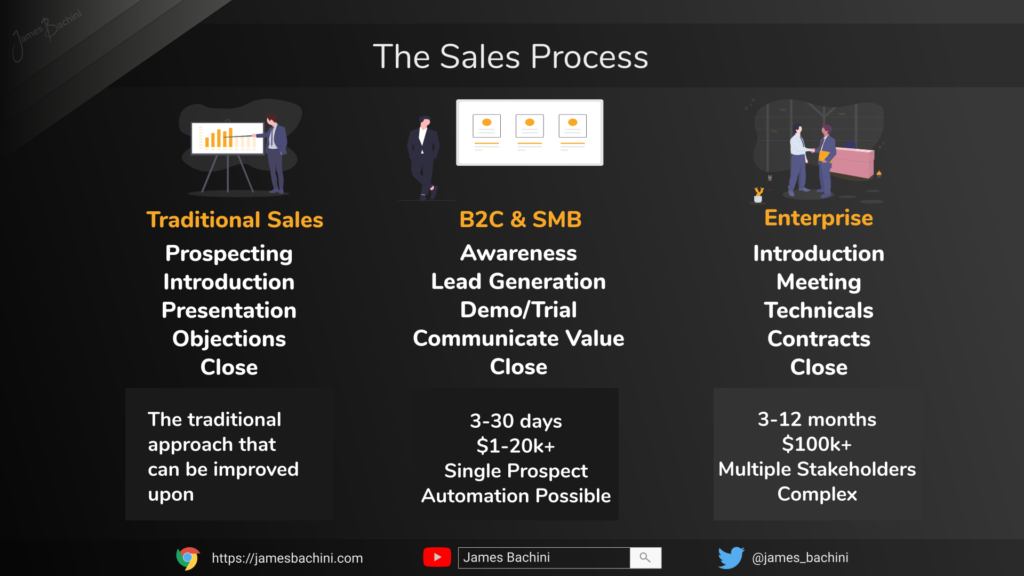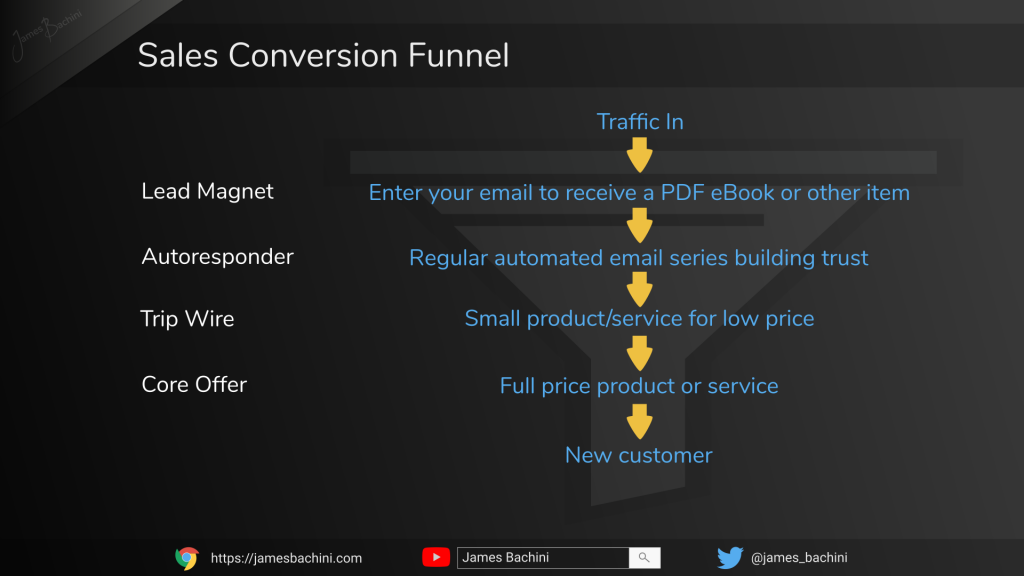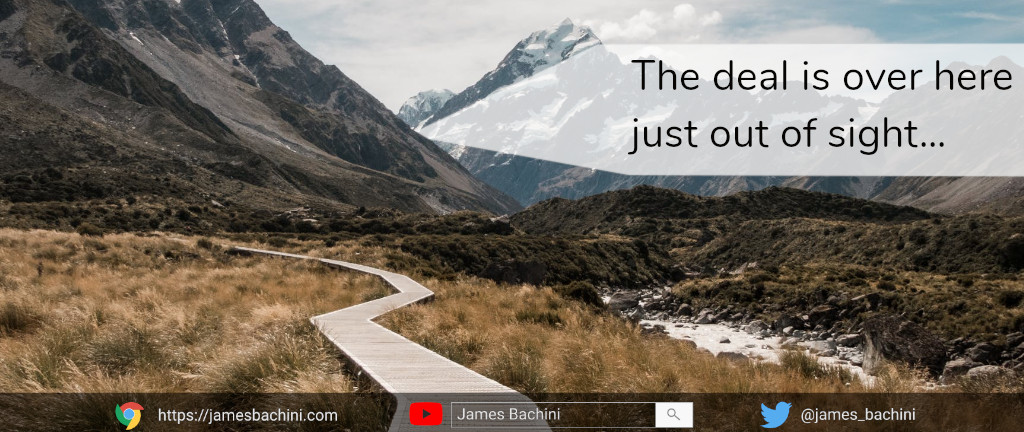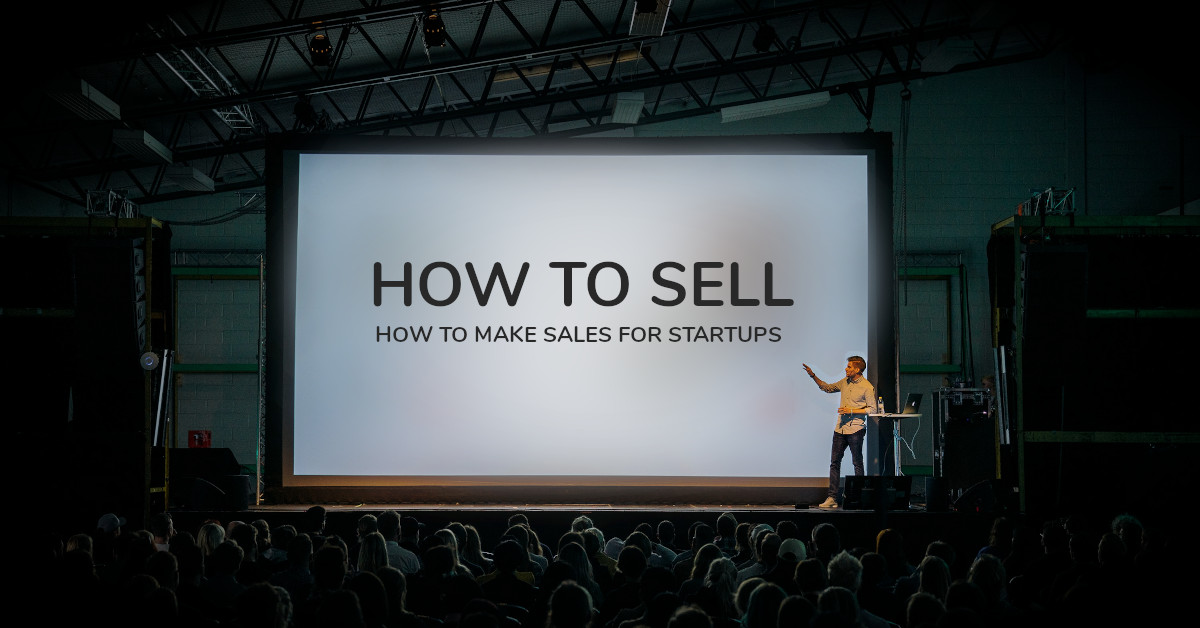In this module I’ll be showing you a proven process for how to make sales. This starts by setting targets and creating a sales plan, then I’ll be discussing lead generation and outreach, sales communications and techniques. The module finishes with a section on how to close the sale.
- The Sales Process
- Set Sales Targets & Create A Sales Plan
- Generating Leads Push vs Pull
- Communicating With Potential Customers
- Sales Techniques 101
- Closing – How To Close The Sale
The Sales Process
Initial Outlay & Trust
An optimal sales process is very much dependent on two factors. The initial outlay (price) and trust or how warm/cold a lead is.
The higher the initial outlay the more energy needs to be put into making a sale. Likewise the less a prospect knows about you, your business and your product the more it will take to close that sale.

If you are selling a B2C product for $27 then there is no need for a formal sales process. The risk value for the client is so low they don’t want to setup a meeting to discuss it. In contrast if you are a startup trying to sell enterprise level software at a $100k+ price point then expect a 3-12 month sales process which will require a lot of energy from both parties to complete.
In most circumstances the initial outlay is seen as the primary risk factor for the client. Monthly fees or staged payments can reduce this perceived risk.
How Would You Buy It?
The first step is to imagine the journey of you (as your ideal customer) going from being unaware to being a happy customer.
Here are some questions to explore this and get a clearer picture of the ideal sales process:-
- Have you purchased similar products in the past?
- What did that sales process look like?
- How did you initially hear about the company and their products?
- Would a video call, webinar or in person meeting make you feel more comfortable committing to a purchase?
- What objections would cause concern?
- What would increase my trust in the product?
- How would the perfect demo go?
- What technical factors do you need to know?
- What pricing plan would work best for you?
- What support and post-sales follow up would be nice?
Reimagining A Standard Sale
Here are some simplified common sales processes that should sound familiar.

The traditional sales presentation approach has been used for the best part of a century. Today modern sales funnels generate leads which are converted to sales through trials and communicating value. Enterprise sales is a complex process with high stakes.
You’ll know if you are about to walk into an enterprise sales meeting because you’ll be wearing a name badge.
There’s no single sales process that fits all products. The process for how to make sales needs to be planned and continually optimized.
Set Sales Targets & Create A Sales Plan
Setting sales targets creates an environment where efforts can be planned, executed, assessed and rewarded.
SMART Sales Targets
SMART goals are specific, measurable, attainable, relevant and time-bound.
Sales targets should be specific to a dollar amount, number of new customers, pipeline increases etc. These targets should be easy to measure and share between the team on a day to day basis. Targets need to realistic but ambitious enough to move the business forwards. Sales targets should be set and formally reviewed at least monthly for most businesses.
Sales Plan Template [Download]
Here is a standard template for a monthly sales plan. This can be used to set out objectives and targets alongside creating actionable steps to achieve those sales.
https://jamesbachini.com/resources/SalesPlanTemplate.pdf

The sales plan should include the following sections
- Sales Targets – Revenue and other measurable targets for the period
- Prospects / Lead Gen – Where will leads be generated and at what scale
- Sales Pipeline – A brief overview of the sales process and any optimizations or tests each stage
- Strategy – The overall sales strategy and focus points for the period
- Internal Roles & Requirements – What measurable actions are required of individuals to meet targets
- Pre-Execution Analysis – A opportunity to look ahead and discuss what could go well and wrong with the plan.
Generating Leads Push vs Pull
Lead generation is what feeds the sales process. This can be achieved by either reaching out to potential customers or effective marketing to help them find you.
Outreach & Cold Calling
My introduction to sales was at the age of about 19 when I was working as a mechanical engineer. A stereotypical slime ball sales rep came down from a compressor manufacturer that I was working with and offered to take me out on a “guerilla sales expedition”.
This involved knocking on doors around local industrial units while he sat in the car and attempting to establish:
A. If they knew what an air compressor was
B. Did they have one and was it being used
C. If they had a need for a new service company
Needless to say it was a unproductive and horrid experience that put me off sales for a number of years.
Outreach doesn’t have to be like this. Today, technology allows us to connect and engage with potential customers without knocking on doors or getting shouted at down the telephone.
The drawback of this is that it’s much easier to ignore sales communications and most decision makers will have walls and filters to block out anything that isn’t specifically targeted and of interest to them.
Prospecting Strategy
Prospecting is the process of finding potential customers and initiating communications.
This starts with research and list building. Spreadsheets, databases or CRM software can be used to assess potential prospects within a sector.
A prospect needs to be:-
- Someone that can gain value from your products or services
- Someone that can afford and justify the price you want to charge
- A decision maker with purchasing power or high level influence
- Contactable past any gatekeepers
A simple list might include company, key person, contact details, communications sent and notes. This can be expanded later for respondents.
Communications channels for initial outreach can include email, social media platforms, telephone calls, snail mail letters and networking events.
Prospecting is a numbers game but that doesn’t mean sales teams should focus on quantity rather than quality of outreach campaigns. Having a personalized angle will increase response rates significantly. Something along the lines of “I saw your talk at xyz…” or “I read your latest post about niche…” is a great way to open as it is almost guaranteed to get past a prospects personal spam filters.

When any form of targeted outreach goes out it should be combined with remarketing due to the high value of that potential client. By firing a retargeting pixel we can create a custom audience to show ads to the people we are cold calling even if they don’t respond to initial communications.
Inbound Sales Funnels
If you can get prospects to come to you through effective marketing it will make the sales process far more effective.
A strong content strategy focused on topics that your ideal customer will be searching for is a good place to start. This can be combined with targeted advertising on Google Ads and relevant social media channels such as Facebook Ads or Linkedin.
Once the prospect is familiar with the brand, retargeting ads and email communications can move them through the sales funnel.

Inbound sales funnels are most effective when they establish brand authority in a niche. The effect of being everywhere and producing high quality content warms leads prior to sales specific communication.
Sales funnels for low value items below $1000 can be fully automated whereas there are no alternatives to personal involvement for enterprise sales and high value items.
Communicating With Potential Customers
Customer Relationship Management CRM
Salesforce is the market leader in CRM software and their application serves as a good framework for general sales management.

A lead is generated when a customer fills in a form or is contacted via a prospecting campaign. This data is then stored as a sales opportunity and assigned to a team member.
The sales person will contact the prospect to qualify the lead while answering any queries they may have.
Some data points that should be recorded:-
- Company name
- Contact’s name
- Contacts role (technical assessor, ceo, influencer)
- Account maps (who’s who in an organisation)
- Requirements (needs and wants)
- Product interest
- Budget or sales potential (helps forecasting)
- Sales process stage with dates
- Quotation references and values
- Demo/Trials provided
- Content consumption (emails & articles)
- Objections and road blocks
- General and personal notes
- Sales / Order values
- Customer support queries
Salesforce doesn’t create a perfect sales process but it does put all this data and more in one place making it easy for teams to manage the sales process.
For startups and founders on tight budgets a simple spreadsheet is still effective. The quality of the data that you put in is more important than where you store it.
With all the data, charts and software available to modern sales teams it’s easy to get wrapped up in tech and forget that sales is ultimately about people and meeting their needs.
Sales Communication Channels
Email is still the number one channel for sales communications for most businesses. Decision makers have email and the vast majority interact with it personally and frequently.
personalized email outreach is widely accepted and prospects are in response mode when “replying to emails”.
Email is free, scalable and has a low barrier to entry. While prospecting email contact details can be found by searching LinkedIn profiles, Github profiles, websites, a quick call to a receptionist and guessing based on company standards [email protected]
The subject line and first paragraph or hook are critical. You need to establish straight away that this is a personal communication and not something that’s been sent out to an entire list.
Social Media
Social media outreach is hit and miss at best. If you have a Linkedin and Twitter account you’ll know how inundated with spam you get.
The only way to stand out is to get personal and build relationships with people that you want to connect with.
Some platforms work well in certain industries such as Telegram for the blockchain sector. This very much depends on where your prospects are and how they are used to communicating on a B2B level.
Video & Phone Calls
Personal contact by phone or video call is a great way to build trust and get to know your customers. People like to do business with other people and for high ticket items there’s no substitute.
“Getting on a call” is also the best way to qualify a prospect. Figuring out at an early stage if they are suitable for your products and services can save a lot of time and energy for both parties.
In Person Meetings
For enterprise sales you are going to have meetings, lots of meetings. Meetings for presentations, meetings for demos, meetings for technical integration discussions, meetings for contract negotiations and hopefully meetings for celebratory drinks after the deal is done.
Enthusiasm and optimism can go a long way to making this less painful. Trust and have patience with the customers process.
Sales Techniques 101
Here are 10 sales techniques that will enable you to close more deals and sell more products.
Make Less Noise
No one wants to be sold to. Talking too much and not listening enough can close off and lose a potential customer.

Clients want to be understood, they want sales people to listen to their needs and then make recommendations on what best suits their requirements.
The best technique I’ve found to help in this field is active listening. The principle here is to mute internal dialog and focus 100% on exactly what it is the person you are speaking to is saying.
Listen more and talk less. Ask questions, which leads to…
Understanding The Customer
The best sales people I have worked with are compassionate extroverts. Being able to see something from someone else’s point of view is the most underrated skill in sales.
By learning as much as possible about a lead we can find out how best to align our offerings to meet their needs. Understanding the customer gives us the foresight to preempt objections, maximize spend in accordance to budgets and fill gaps in product knowledge.
First make the client feel heard, then make them feel understood with tactical empathy.
Building Rapport
It’s established psychology that people trust and are more comfortable around people they see as similar to themselves.
This affects sales. If a client has a choice between two identical products but some common ground with one of the reps they’ll go with the rep they like more because they can relate to them better.
If you can find some common ground with the people you are working with then it helps a lot in build relationships and breaking down barriers.
Make The Lead Feel Important
There’s a definite balance to this and it’s better to steer well clear of taking it too far. Make the client feel respected and important in an emotionally intelligent way.
Pushy sales people aren’t respected or effective because they try to take control away from the client.
The customer should always be in the driving seat with the sales person doing directions.
Loss & Risk Aversion
This is a psychological principle that comes in to play a lot in sales and marketing. People are far more inclined to take action to avert loss than they are to achieve a gain.
This can be leveraged by asking “What is the alternative?” at the right time to flip a conversation around and look at what the client could lose by not moving forwards.
Win Win
The best business never feels like a sale or purchase. It feels like a win win for both parties. Working together towards a common goal.
If you can find a situation or position your product so that it creates a win win situation then it’s much easier to get to yes.
Common win win examples could include a product that enables the client to charge their customers more, a press release opportunity for both parties or an integration that has mutual benefits.
Product Knowledge
Detailed product knowledge is essential for sales reps because it gives confidence and establishes respect in a sales environment.
Part of the sales role is to educate the prospect on the value of the product. This can only be achieved effectively if the sales person knows the product they are selling intricately.
Being asked a question and having to respond “I’ll come back to you on that” is a warning signal that some reading up is required.
Brutal Honesty
This is something debatable but I personally believe that brutal honesty is the best approach in most situations. If a competitors product has some features which are better than yours, be the first person to say so. This builds respect, trust and gives the opportunity to explain what you are doing about it.
It goes back to thinking about things from a customers perspective. What do they want from a sales meeting? Honesty, product knowledge and understanding are probably at the top of that list.
Following Up
No one ever lost a sale because they followed up too much. Admittedly there’s a point when you are probably wasting your time but most sales people don’t follow up enough.
Even if you follow up once more than normal for a year and only get a 1% conversion rate it’s money that would have been left on the table.
Business ghosting is very much a thing and leads can simply vanish. Most likely they’ve gone with a competitor or simply decided on inaction. Either way there’s something to be learned even if you can’t rekindle the sale.
Sales Practice & Perfection
Sales is a skill like any other and it takes regular practice to master. Enjoying the process and communications will ensure you come across well and stick with it to develop your sales technique over time.
While daunting at first, successful sales will come and with them confidence. There’s a huge amount of information online and in book format which can also help learn and fine tune your technique. However nothing beats practice.
Closing | How To Close The Sale
Wandering The Sales Path

It would be wonderful if all sales meetings ended with a final decision and everyone could go back to work. Unfortunately indecisiveness and inaction kills the vast majority of sales leads.
It’s the sales persons job to keep the conversation moving forwards in a meaningful way. To build understanding between parties to a point where a sale can be completed.
Getting to yes will differ between industry and companies. It may take one call or it may take twenty meetings. Find out what the customer wants, how they are used to making purchasing decisions and how best to guide them to the desired outcome.
Negotiations
If you get to a point where money is discussed then a deal is close. At this point leverage comes into play. How much leverage does each side have and who is this deal more important for.
Having a superior product over competitors and a good rapport with the client makes the final step easier.
Whatever happens don’t lose the deal on the close. Figure out what is a win for the client then do whatever is required to meet that with your own requirements.
Whether you go in with your best price first time or go in at a higher than walk away price to facilitate discounts at a later stage is a judgement call that needs to be made in advance.
Once pricing is agreed the final step is often contracts but at this stage it’s highly unlikely for one side to be completely unreasonable enough to blow the deal.
The Close
In a sales setting once you have reached a point where you feel the client is ready it is not impolite to ask if it’s time to do the deal.
Here are some prefabricated close’s but it’s best to come up with something that matches the situation.
- Are you ready to do a deal?
- Are you interested in getting started?
- Is there any way we can get this deal done today?
- If we could find a way to x, would you be happy to proceed?
- What’s your timeline for a purchase decision?
- If we can agree terms are you happy to proceed?
These canned responses will give you some ideas but say whatever feels right in the moment. Just don’t leave without closing in some way shape or form.
If you are interested in sales & marketing there’s a free online course here: https://jamesbachini.com/learn/
If you’ve enjoyed these resources could you help share this content on social media and send it to anyone who you think might benefit from it.
Thank you.



